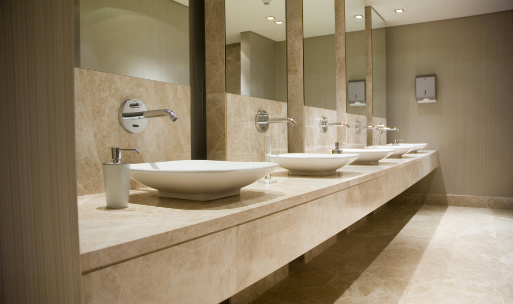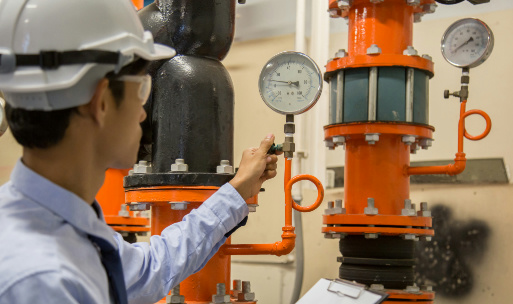Smart Public Restroom: Revolutionizing Hygiene, Safety, and Sustainability
As urbanization and digital transformation reshape our cities, public infrastructure is undergoing a profound evolution. One of the most overlooked but essential aspects of urban life is the public restroom. Traditionally associated with discomfort, poor maintenance, and hygiene concerns, public restrooms have now become a focal point for innovation in smart city planning.
A Smart Public Restroom integrates advanced technologies such as IoT (Internet of Things), environmental sensors, AI-driven analytics, cloud computing, and automation systems to provide cleaner, safer, more energy-efficient, and user-friendly restroom experiences. These restrooms are more than just facilities; they are key components of a healthy, data-driven, and connected urban ecosystem.
This article explores the components, technologies, and benefits of Smart Public Restrooms and highlights how they are revolutionizing sanitation in modern cities.
What is a Smart Public Restroom?
A Smart Public Restroom is an automated and sensor-equipped sanitation facility that monitors and manages key aspects of restroom usage, cleanliness, air quality, occupancy, water usage, energy consumption, and maintenance needs. These restrooms typically include:
-
Real-time air quality and odor monitoring
-
Occupancy detection systems
-
Touchless fixtures (toilets, faucets, soap dispensers)
-
Smart lighting and HVAC control
-
Predictive maintenance alerts
-
Usage analytics and reporting
-
Remote management through cloud platforms
These systems enable proactive management, timely cleaning, enhanced safety, and better resource allocation, ultimately improving the user experience while reducing operating costs.
Core Technologies Behind Smart Public Restrooms
a. Environmental Sensors
Sensors play a crucial role in monitoring the restroom environment. These include:
-
Air Quality Sensors: Measure levels of ammonia (NH₃), hydrogen sulfide (H₂S), carbon dioxide (CO₂), VOCs (Volatile Organic Compounds), and PM2.5/PM10 particles.
-
Temperature and Humidity Sensors: Ensure thermal comfort and prevent mold growth.
-
Odor Sensors: Detect foul smells and trigger exhaust fans or cleaning alerts.
-
Gas Leak Sensors: Identify hazardous gases for fire or health risk prevention.
b. Occupancy Detection
Smart restrooms often use Passive Infrared (PIR) sensors, ultrasonic sensors, or time-of-flight (ToF) cameras to detect human presence in stalls or urinals. This helps:
-
Show real-time availability on digital signage
-
Automatically control lights and ventilation
-
Collect usage statistics for maintenance scheduling
c. Automation and Control Systems
Restroom automation enhances hygiene and efficiency. Common systems include:
-
Touchless Fixtures: Activated by motion sensors to prevent cross-contamination
-
Smart Toilets and Bidets: With automated flushing, deodorizing, and seat temperature control
-
Lighting and HVAC Automation: Adjusted based on occupancy and time of day
d. Connectivity and Cloud Integration
All sensor data is collected and transmitted to a cloud-based dashboard for:
-
Real-time monitoring
-
Predictive maintenance
-
Historical trend analysis
-
API integration with city management platforms
Communication protocols such as Wi-Fi, LoRaWAN, Zigbee, or NB-IoT are used to ensure reliable data transfer.
Applications and Use Cases
Smart Public Restrooms are ideal for:
-
Transportation Hubs: Airports, train stations, and bus terminals where foot traffic is high.
-
Tourist Attractions: Enhancing the visitor experience with clean, tech-enabled facilities.
-
Shopping Malls and Stadiums: Where restroom usage spikes during events or weekends.
-
Smart Parks and Plazas: Supporting green and connected city initiatives.
-
Schools and Universities: Improving sanitation and safety for students.
Benefits of Smart Public Restrooms
a. Improved Hygiene and Health
Touchless systems and real-time cleaning alerts reduce the spread of germs and viruses. Odor control and air quality sensors ensure a more pleasant environment.
b. Enhanced User Experience
With digital signage showing stall availability, consistent cleanliness, and automated features, users have a stress-free and comfortable restroom experience.
c. Cost and Resource Savings
Automated control of lights, water, and air systems reduces utility bills. Predictive maintenance prevents equipment failure, reducing emergency repair costs.
d. Sustainability and ESG Compliance
Water-saving toilets and faucets, energy-efficient lighting, and minimal chemical use align with green building standards and corporate social responsibility goals.
e. Data-Driven Operations
Analytics provide insight into peak usage times, restroom performance, and service quality. Facility managers can optimize cleaning schedules and resource allocation accordingly.
Air Quality Monitoring in Smart Restrooms
One of the most critical aspects of Smart Restrooms is air quality monitoring. Poor air quality in restrooms leads to discomfort, health risks, and bad impressions. Key gas parameters include:
- Ammonia (NH₃)
Produced from urine, high levels cause eye and respiratory irritation. Smart sensors detect and alert cleaning crews.
- Hydrogen Sulfide (H₂S)
Generated by decaying organic matter in sewage. It has a rotten egg smell and is toxic at high concentrations.
- Volatile Organic Compounds (VOCs)
Come from cleaning agents, air fresheners, and waste. Prolonged exposure can lead to headaches and respiratory problems.
- Carbon Dioxide (CO₂)
Indicates crowding and poor ventilation. High levels suggest the need for fresh air intake.
Real-time gas sensors connected to a ventilation system can dynamically manage airflow and alert staff when thresholds are exceeded.
Winsen Smart Public Restroom Gas Sensor Solution

| Target: | NH3, SO2(Customizable) |
| Model: | ZE03G |
| Detection range: | See manual |
| Detection principle: | Module, electrochemical |
| Characteristics: | Portable and fixed gas detector, various gas detection equipment and situation. |
| Size: | ø23.5mm*24.5mm |
ZE03G Manual download
Get Price Whatsapp
Challenges and Considerations
a. Privacy Concerns
Camera-based occupancy sensors must avoid identifying individuals. Data must be anonymized and securely stored.
b. Initial Costs
Smart restrooms require upfront investment in infrastructure, though ROI is realized over time through operational savings.
c. System Integration
Devices must be interoperable and compatible with the city’s IoT platform and existing facility management systems.
d. Maintenance of Devices
Sensors and automation systems need routine checks and firmware updates to ensure consistent performance.
The Future of Public Restrooms
As AI and 5G technologies mature, Smart Public Restrooms will become even more intelligent and user-centric. Possible future features include:
-
Voice-guided wayfinding for visually impaired users
-
AI-driven cleaning robots for autonomous sanitation
-
User feedback interfaces to rate cleanliness and functionality
-
Biometric access control for security and personalization
-
Water recycling and air purification systems to further improve environmental impact
These features will not only transform how restrooms are used and maintained but also set new standards for public health infrastructure.
Conclusion
Smart Public Restrooms represent a remarkable fusion of technology, sanitation, and urban planning. By addressing hygiene, air quality, sustainability, and user experience through real-time data and automation, these restrooms have become essential components of smart city ecosystems.
Whether deployed in bustling urban centers or remote parks, Smart Public Restrooms demonstrate how even the most basic human needs can be reimagined through innovation. With growing demand for clean, safe, and efficient public facilities, the future of public restrooms is not only smart—it’s transformative.





